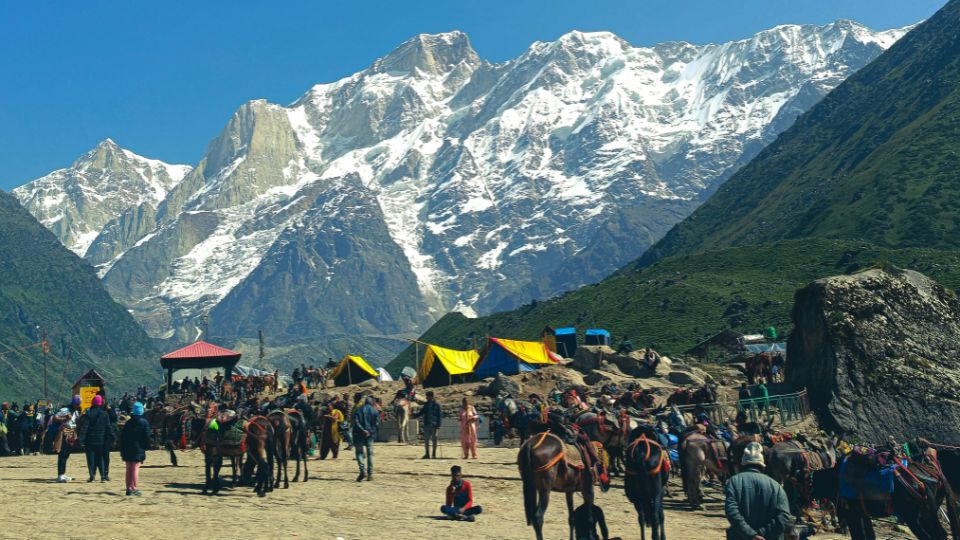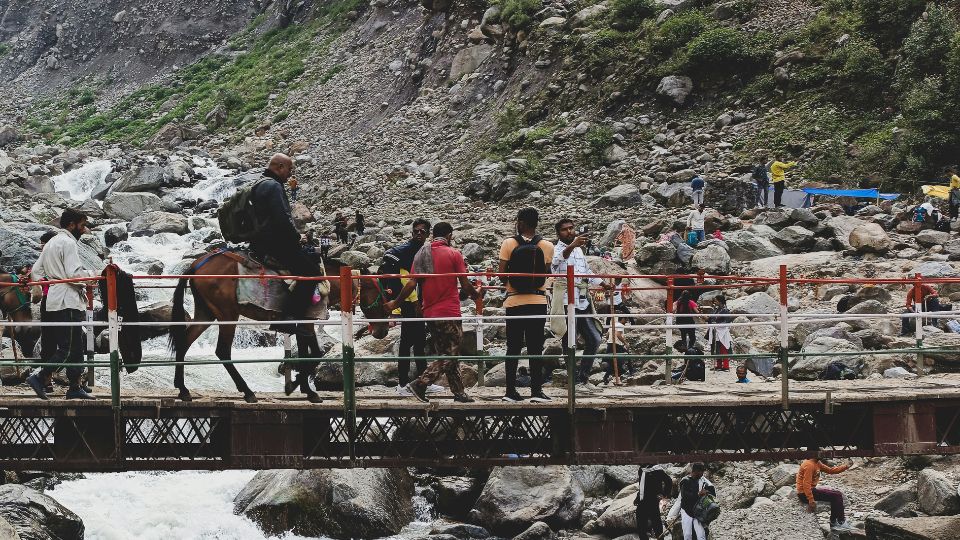Norway Northern Lights with International Tour Packages
- Jun 26, 2024



The Char Dham Yatra is a revered pilgrimage in Hinduism, encompassing four sacred sites in the Indian Himalayas: Yamunotri, Gangotri, Kedarnath, and Badrinath. Traditionally undertaken from west to east, the yatra symbolizes the journey to attain divine blessings and spiritual liberation.
Kedarnath, the third dham in the sequence, holds immense significance as it is home to the ancient Kedarnath Temple dedicated to Lord Shiva. Situated near the Mandakini River, it is not only a testament to spiritual devotion but also to architectural marvel, surviving centuries of natural calamities. The yatra to Kedarnath is a transformative experience, offering pilgrims a chance to witness the abode of one of Hinduism’s most revered deities and to immerse themselves in the tranquility of the Himalayan landscape.
This introduction to your blog could set the tone for an insightful exploration of the spiritual and cultural richness of the Char Dham Yatra, with a special focus on the divine journey to Kedarnath.
Embarking on the Char Dham Yatra to Kedarnath is a spiritual and challenging journey. What you should know to get ready is as follows:

Best Time to Visit Kedarnath:
Pleasant Weather: April to June offers the most pleasant weather for your pilgrimage. kedarnath temperature range from 10°C to 15°C, ideal for trekking and sightseeing. This is also the pilgrimage season, so expect crowds.
Shoulder Season: September and October can be good alternatives, with slightly cooler temperatures and fewer crowds. However, be prepared for unpredictable Kedarnath weather changes.
Essential Items to Pack:
Warm Clothing: Pack thermals, woolen socks, a fleece jacket, and a waterproof windbreaker for the chilly Himalayan climate.
Sturdy Shoes: Comfortable and sturdy hiking shoes are essential for the trek to Kedarnath.
Rain Gear: A light raincoat or poncho is crucial, especially if visiting during the shoulder season.
Sun Protection: Sunglasses, a hat, and sunscreen are necessary for the bright mountain sun.
Essentials: Pack toiletries, medications, a water bottle, a flashlight, and a headlamp.
Religious Items (Optional): Carry puja items like incense sticks, dhoop, and a small puja thali if you wish to perform personal rituals.
Physical and Mental Preparation Tips:
Gradual Acclimatization: If you're not accustomed to high altitudes, consider spending a few days in lower Himalayan towns like Rishikesh or Uttarkashi to allow your body to adjust.
Physical Fitness: The trek to Kedarnath is moderate. Regular exercise beforehand, especially focusing on cardiovascular endurance and leg strength, will make the journey easier.
Mindset: Be prepared for challenging weather conditions, potential delays, and a spiritual experience unlike any other. Embrace the journey with a positive and patient attitude.
Char Dham Yatra Registration
While permits are not mandatory for the Char Dham Yatra, registering online beforehand is highly recommended. This helps authorities manage pilgrim traffic and ensure a smoother experience. Registration is free and can be done on the Uttarakhand Tourism Department's official website: Char Dham Yatra Registration.
Here's a tip: Since weather conditions in the Himalayas are unpredictable, registering allows you to receive timely updates and advisories to ensure a safe pilgrimage.
By planning and preparing effectively, you can ensure a safe and fulfilling pilgrimage to Kedarnath.
This blog dives deep into Kedarnath, a sacred Hindu pilgrimage site nestled in the majestic Himalayas. As part of the revered Char Dham Yatra, Kedarnath offers a spiritual and scenic experience for countless devotees.

There are two primary starting points for your Kedarnath journey:
Haridwar: A holy town known as the "Gateway to the Himalayas" Haridwar provides a spiritual start to your pilgrimage.
Rishikesh: Famed as the "Yoga Capital of the World" Rishikesh offers a chance to rejuvenate your mind and body before embarking on the trek.
Reaching Kedarnath involves a combination of transportation options:
Road: This is the most common mode. You can hire taxis, shared cabs, or state buses to reach Gaurikund, the last point accessible by vehicles.
Helicopter: For those seeking a faster option, helicopter services operate between major towns and Gaurikund (subject to weather conditions and availability).
Important Note: Private vehicles are not allowed beyond Gaurikund.
The 16-kilometer trek from Gaurikund to Kedarnath is a significant part of the pilgrimage. Here's a breakdown of your options:
Trekking: Embark on a physical and spiritual journey on foot. The breathtaking Himalayan views and fresh mountain air will invigorate you.
Horses/Ponies: For those seeking some assistance, horses and ponies can be hired to navigate the trail.
Palanquin: A traditional mode of transport, palanquins carried by porters can be used for the trek.

Located at an elevation of 3,583 meters in the Garhwal Himalayan range, the Kedarnath Temple is one of the holiest Hindu shrines devoted to Lord Shiva. It is part of the Chota Char Dham pilgrimage and the Panch Kedar circuit. The temple’s origins are shrouded in myth, with connections to the Mahabharata. It is believed that the Pandavas constructed the original structure, which was later revived by Adi Shankaracharya in the 8th century AD. The temple is also associated with the legend of Nara-Narayana, who requested Lord Shiva to take residence here as a Jyotirlinga for the welfare of humanity.
The temple’s architecture is a marvel of ancient Indian construction techniques, built from interlocked stone slabs and iron clamps without mortar. Its design is characterized by a towering shikara (spire), a garbhagriha (sanctum sanctorum) housing the deity, and a mandapa (pillared hall) for pilgrims. The temple’s walls feature intricate carvings and the entrance is adorned with a stone arch. A conical rock formation inside the temple represents the Sadashiva form of Shiva.
The temple follows a strict schedule of rituals and ceremonies, starting with the Maha Abhishek at dawn and concluding with the Shayan Aarti at night. The Rawal, the chief priest from the Veerashaiva community, oversees the daily pujas. Devotees can participate in various rituals, including the Rudrabhishek, where the idol is bathed with sacred offerings. The temple also holds immense significance as it is believed to be the site of Shankaracharya’s samadhi.
This section of your blog on "Kedarnath: A Guide to the Char Dham Yatra" will focus on the practical aspects of staying in Kedarnath. Here's how you can break it down for your readers:

Options for Staying in Kedarnath:
Dharamshalas: Kedarnath offers dharamshalas managed by various organizations and trusts. These are budget-friendly options with basic amenities like beds and blankets.
Guest Houses: Guest houses provide a step-up from dharamshalas with slightly more amenities like attached bathrooms or hot water.
Hotels: A few hotels in Kedarnath offer a comfortable stay with facilities like room service and heating.
Availability of Food and Medical Facilities:
Food: While limited, restaurants and stalls are serving simple vegetarian meals like dal, rice, and sabzi.
Medical Facilities: Basic medical care is available at a dispensary in Kedarnath. However, for anything serious, it's best to descend to lower towns like Gaurikund or Guptkashi.
Tips for a Comfortable Stay:
Book in Advance: Especially during peak season, accommodation gets filled quickly. Consider booking well in advance, particularly for dharamshalas which often have limited online availability.
Carry Essentials: Pack warm clothes, toiletries, and basic medicines as options in Kedarnath might be limited.
Be Prepared for Simplicity: Kedarnath prioritizes pilgrimage over luxury. Embrace a simple lifestyle and focus on the spiritual experience.
Manage Expectations: Be prepared for basic facilities, especially when it comes to washrooms and hot water.
By including this information, you'll equip your readers with the knowledge they need to find suitable accommodation and prepare for their stay in Kedarnath. This will make your blog a valuable resource for anyone planning a Char Dham Yatra that includes Kedarnath.
As the echoes of temple bells fade away and the majesty of the mountains becomes a memory, the essence of Kedarnath lingers within the soul. The Char Dham Yatra is a testament to the enduring human spirit, seeking the divine amidst nature’s grandeur. This guide has walked you through the steps of this sacred journey, hoping to illuminate your path. May your pilgrimage to Kedarnath be imbued with the blessings of the gods and the whispers of the Himalayas, guiding you toward a horizon of spiritual awakening.